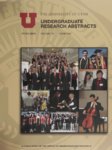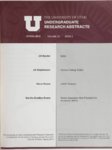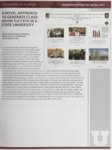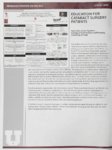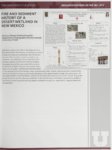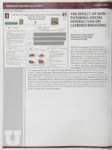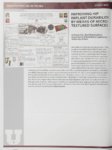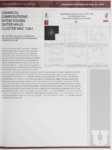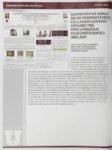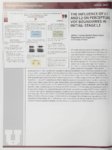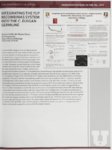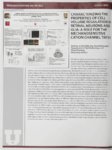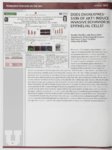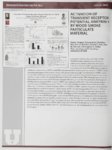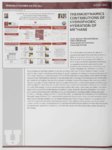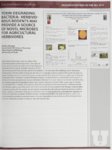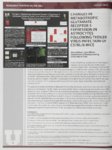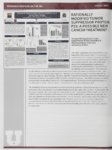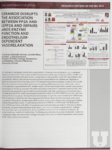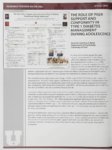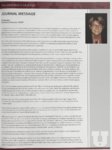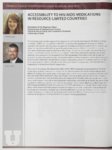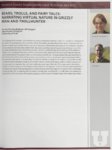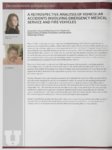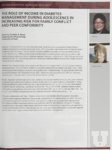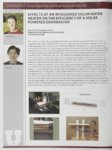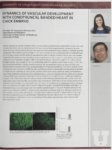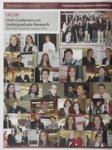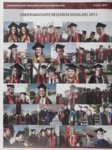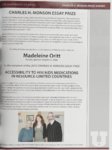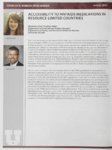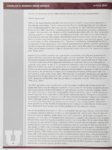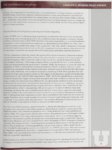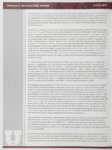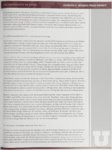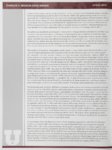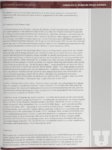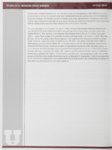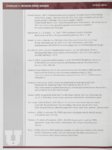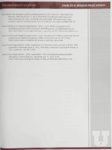| OCR Text |
Show *t POSTERS ON THE HILL SPRING 2013 The influence of LI and L 2 on perceptual V O T boundaries in initial-stage L3 Jeffrey J. Green & Rachel Hayes-Harb Department of Linguistics u THE UNIVERSITY OF UTAH «f» Introduction • A s individuals study an L3, their knowledge of both their native language (LI) and their L 2 will compete with their developing knowledge of the L3 (Falk & Bardel,2010) * Languages differ in timing between articulation of a consonant and the beginning of the vibration of the vocal folds (voicing) - Voice Onset Time ( V O T) • Studies suggest a stronger influence from L 2 than from LI in L 3 production of V O T (Llama, Cardoso, & Collins 2010; Wremble 2011) • Subjects had previous L3 input, and the influence of L3 V O T is unclear Research Question • Are V O T perceptual boundaries used by learners in the initial stages of acquiring an L 3 m o r e similar L I or L 2 boundaries? Perception Study * Listeners: Native English speakers, fluent in Spanish (n=20); Native Spanish speakers, fluent in English (n=20); Monolingual English speakers (n Hi) * General Procedure: Subjects complete three tasks in each of three languages * The tasks are identical in each language • L3 is always last; for monolinguals, LI will always * Instructions for each task presented in the relevant language * Since subjects will not understand the instructions in the unknown language, tasks are color-coded for clarity and consistency across all three languages Task 1: Inducing a Language Mode • Stimuli: 15 words and phrases in each of the three languages, containing n o stop consonants • Procedure: Stimuli presented over headphones and written o n screen; subjects repeat each w o r d or phrase into a microphone Task • stimuli /gaMca/, in • Procedur identify w h with (either homorganic Povtortre sJovo Hi rrezu vos'em iz nix 2: Consona Ganges of syl lab 5ms steps of V O ••t^aTF^ J, -SOns VOT e: Subjects hear ch consonant eai the voiced or the pair) it Identification es /ba/-/pa/, /da/-/ta/, and T "^•a^aa^ flat [p»].+70msVOT one stimulus at a time and h made-up word starts voiceless variant of a C kakoj bukvy n a chin a jets'a eto aJovo? P B Task 3: A X discrimination * Stimuli: S a m e as in Task 2. Presented in pairs, with 2 0 m s difference in V O T between items of a pair * Procedure: Subjects will hear each pair of stimuli and indicate whether the t w o items in a pair are the same word or different words • A n indication of "different" indicates that the 2 0 ms difference between the two stimuli spans the V O T phonemic boundary for that listener Preliminary Results •The results of Tasks 2 and 3 will indicate where subjects place perceptual V O T boundaries in each language •These results will be analyzed to determine whether initial-state L3 boundaries are closer to those of LI or L2 •This will indicate whether bilinguals are more likely to rely on the phonology of their first or second language to process a new language References: Falk, Y„ & BardeL. C. (2010). The Rutty of the role of the background Llama, R.. Cardoso. W., & Collins. L. (2010). The influence ordinance and language status on the acquisition of L3 phonology. International Journal o/Mu/rillngualUm, 7(1), 39-57. Wremble, M . (2011. August 17-21). Cross-linguistic influence in third language acquisition of voice onset time. ICPhS. XYU, conference proceedings, 2157-2)60. 14 THE INFLUENCE OF L1 AND L2 ON PERCEPTUAL VOT BOUNDARIES IN INITIAL-STAGE L3 Jeffrey J. Green (Rachel Hayes-Harb) Department of Linguistics University of Utah Although learning a second language is difficult, many people believe that once an individual has acquired a second language, it will be easier to learn a third. This m a y be in part due to influence from the first (L1) and second languages (L2) on the third language (L3). Previous research has shown that during early stages of L3 acquisi tion, both LI and L2 phonology (the underlying sound system of a language) influences the production of L3. This is evident, for example, in subjects' production word-initial stop consonants, such as d, p, and k. Languages differ in the timing between the release of the consonant and the beginning of vibration of the vocal folds (voicing). This timing is known as Voice Onset Time (VOT) (for example, the difference between t and d lies only in when voicing occurs). Studies suggest a stronger influence from L2 than from L1 in L3 V O T production, but fail to take into account previous L3 input. In addition, previous studies have addressed production only. Research has yet to investigate (i) the influence of L1 and L2 phonology in the very initial stages of L3 acquisition (when the language is totally unfamiliar), and (ii) the influence of LI and L2 phonology on the perception of V O T boundaries. In this study, w e investigate (i) and (ii) by presenting English and Spanish bilinguals with stimuli representing a range of V O T in their L1 and L2, as well as from a third, unfamiliar language in a series of tasks designed to elicit evidence of boundaries in each language. The results of these tasks will be examined to determine whether subjects rely more on their LI or their L2 for processing of a third, unfamiliar language. W e will begin running subjects in this experiment in November, 2012. Preliminary results and analyses will be available by January 2013. This research will give important insights into the process of acquisition of a third language. |

